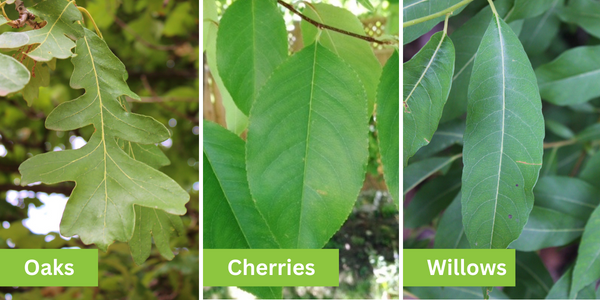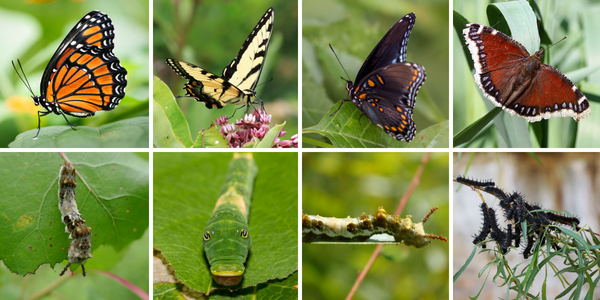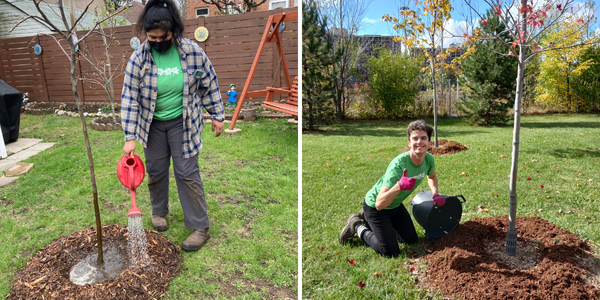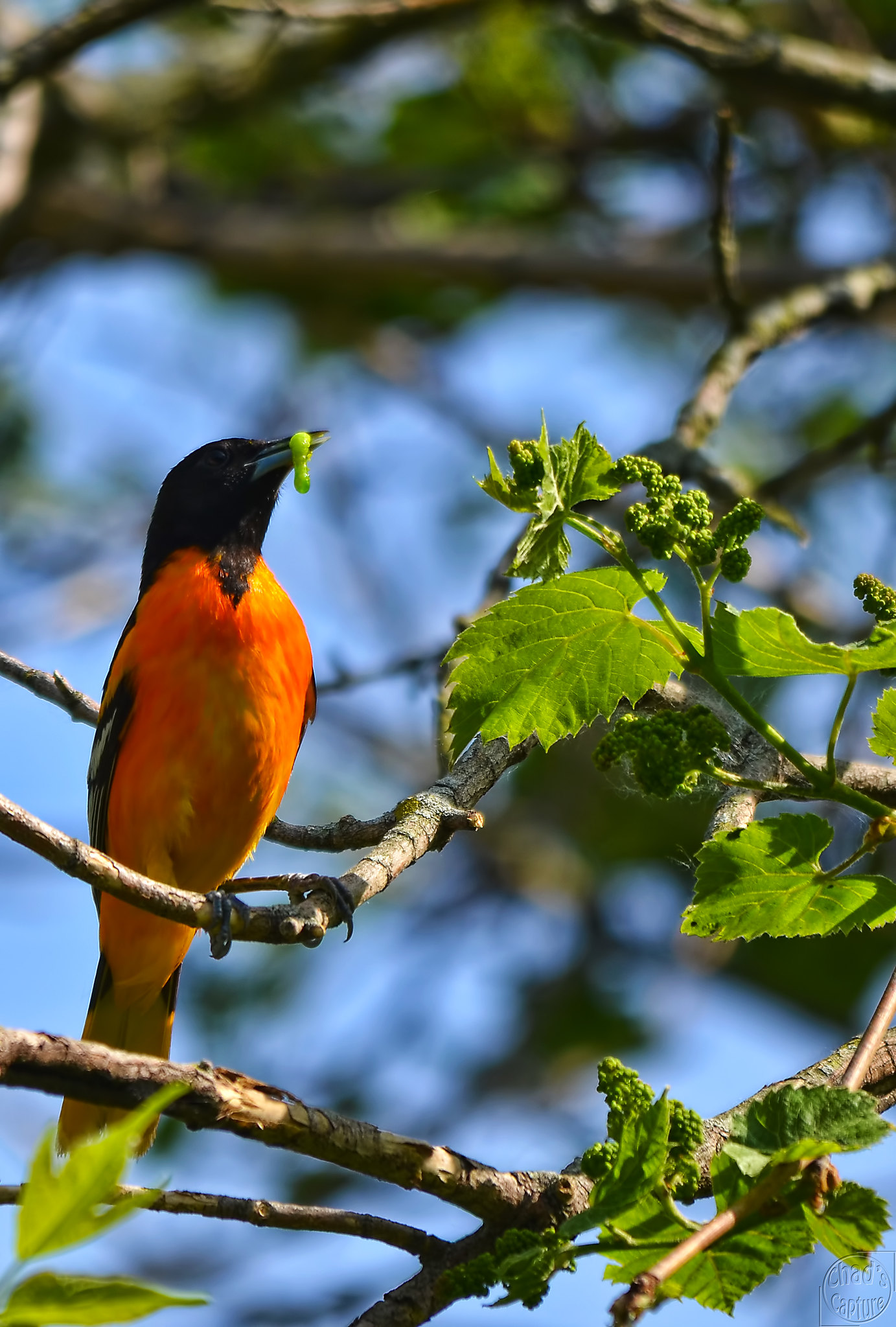Did you know that many butterfly (and moth) species use native trees and shrubs as host plants (plants that insect larvae use as a food source) for their caterpillar stage of life? Did you also know that birds rely on those caterpillars as a critical spring and summer food source, especially to feed their young? And did you also know that trees, shrubs, butterflies and birds, when native to an ecosystem, can not only survive together but also thrive?
Read on to find out how butterflies, birds, trees and shrubs all go together to increase the biodiversity of your backyard!
Butterflies need native trees and shrubs
First, some amazing numbers. If you were to list the host plants that support the most amount of butterflies and moths, native tree species dominate the top spots. Based on our geographic area, National Wildlife Federation’s Native Plant Finder tool lists the Oak family as supporting 521 different species of butterflies and moths! Next on the list is the Cherry family, which supports 455 species, then Willows with 431 species, Birches with 410 species, and Poplars with 360 species!

Many of these species are small, drab or hard to spot moths that usually escape our notice. But there are some really stunning species of butterflies and moths that look to native trees and shrubs on which to lay their eggs. According to Butterflies and Moths of North America, Pussy Willow (Salix discolor) is the host plant for Viceroys, White Admirals/Red-Spotted Purples, Compton Tortoiseshells and Mourning Cloaks. Black Cherry (Prunus serotina) is a food source for caterpillars of Tiger Swallowtails, Coral Hairstreaks and Promethea moths. And Tawny Emperors, Hackberry Emperors, American Snouts and Question Marks all use Hackberry (Celtis occidentalis) as their host plant.

So if you love butterflies, planting native trees and shrubs is a great way to attract them to your yard!
But won’t caterpillars hurt my trees and shrubs?
Caterpillars feeding on your trees and shrubs may sound concerning to you at first. After all, you don’t want your trees and shrubs destroyed by hungry caterpillars! It's important to remember that native trees and shrubs have evolved with native butterflies and moths over thousands of years. The damage these insects make are usually cosmetic and minimal, and healthy trees can adapt during periods of high insect outbreaks.
There are steps you can take to ensure your trees are in top health so they can handle the snacking habits of caterpillars, such as ensuring your trees are well mulched and sufficiently watered. Read our tree care tips to learn how you can help keep your trees healthy and strong.
Invasive insect species are a different story, however. Because there are fewer natural controls to limit invasive insect damage, we recommend that you monitor your trees for invasive insects that can damage your trees. Read more about spongy moths and hemlock wooly adelgid and the steps you can take to manage these invasive pests.

Another way to help protect your trees is to rely on our feathered friends who are more than happy to help limit caterpillar damage – birds!
Caterpillars are a critical food source for birds
Bird species native to Ontario have complex diets and seeds and berries are not enough for them to survive. At certain times of the year, birds rely almost entirely on high amounts of caterpillars (and other insects and spiders) for fat and protein to sustain themselves and to feed their young. This is good news for those who love bird-watching from their windows, and even better news for your trees and shrubs.
A few examples provided by the National Audubon Society show just how important caterpillars are for birds. Black-capped Chickadees’ summer diets are 90% caterpillars and other insects in summer, and 50% of their winter diet are insects (especially eggs and pupae). Baltimore Orioles feed mostly on caterpillars during the summer, including the hairy types avoided by many birds. Gray Catbirds eat many caterpillars and other insects in the summer and feed their nestlings on a diet almost entirely of insects.

This all shows that while butterfly and moth caterpillars are busy eating the leaves from your trees and shrubs, birds are just as busy hunting and eating those caterpillars. In this way, the populations of native butterfly and moth species are kept in check, native birds find nourishment and can raise their young and native trees and shrubs are not overeaten.
Attract all the beautiful butterflies and birds and increase your Backyard Biodiversity by planting native trees and shrubs for less through our subsidized Backyard Tree Planting Program! Check out our Homeowners page to get started on tree planting and our Shrubs, Garden Kits and Pawpaws page to order shrubs.
Justin Lewis is the Marketing and Communications Lead at LEAF.
The #BackyardBiodiversity campaign is a partnership initiative with the Toronto Wildlife Centre and is supported by Ontario Power Generation.
LEAF offers a subsidized Backyard Tree Planting Program for private property. The program is supported by the City of Toronto, the Regional Municipality of York, the City of Markham, the Town of Newmarket, the Regional Municipality of Durham, the Town of Ajax, the Township of Brock, the Municipality of Clarington, the City of Oshawa, the City of Pickering, the Township of Scugog, the Town of Whitby, Ontario Power Generation and Ontario Trillium Foundation.
